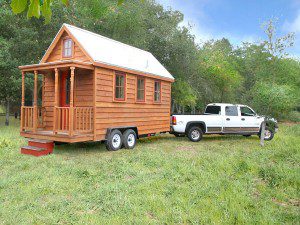
But what about a whole neighborhood of tiny houses? If you're after sustainability, affordability and community development, why stop at constructing your own such house? Why not get together with a group of people who share your affinity for living small, and build 10 or 20 or 100 such homes on a tiny footprint?
As Alan Graham, founder of Mobile Loaves and Fishes in Austin, Texas says in a recent Grist article, the idea of a tiny house community is nothing new. It's been around for all of recorded history, most recently in the form of the trailer park.
A big problem is that many if not most communities view trailer parks rather dimly. They associate them with socioeconomic problems of various kinds. It's interesting, then, that some advocates for tiny house communities are careful to say that with attention to building design and possibly restrictive covenants, they would avoid those problems.
It's a mistake to view tiny houses in this snarky way. Trailer parks, or manufactured home communities, or whatever sanitized name you want to give them, are really one of the best solutions for the affordable housing crisis that we have. We should see the name and distinctive appearance of tiny houses as a means to elevate the status of the trailer park. Maybe use the name “tiny house community” as the progressive answer to “death taxes.”





Are we aloud to build them in the Cleveland, Ohio area Cuyahoga County?? I would like to buy and empty lot and build one so I can have more room to garden.